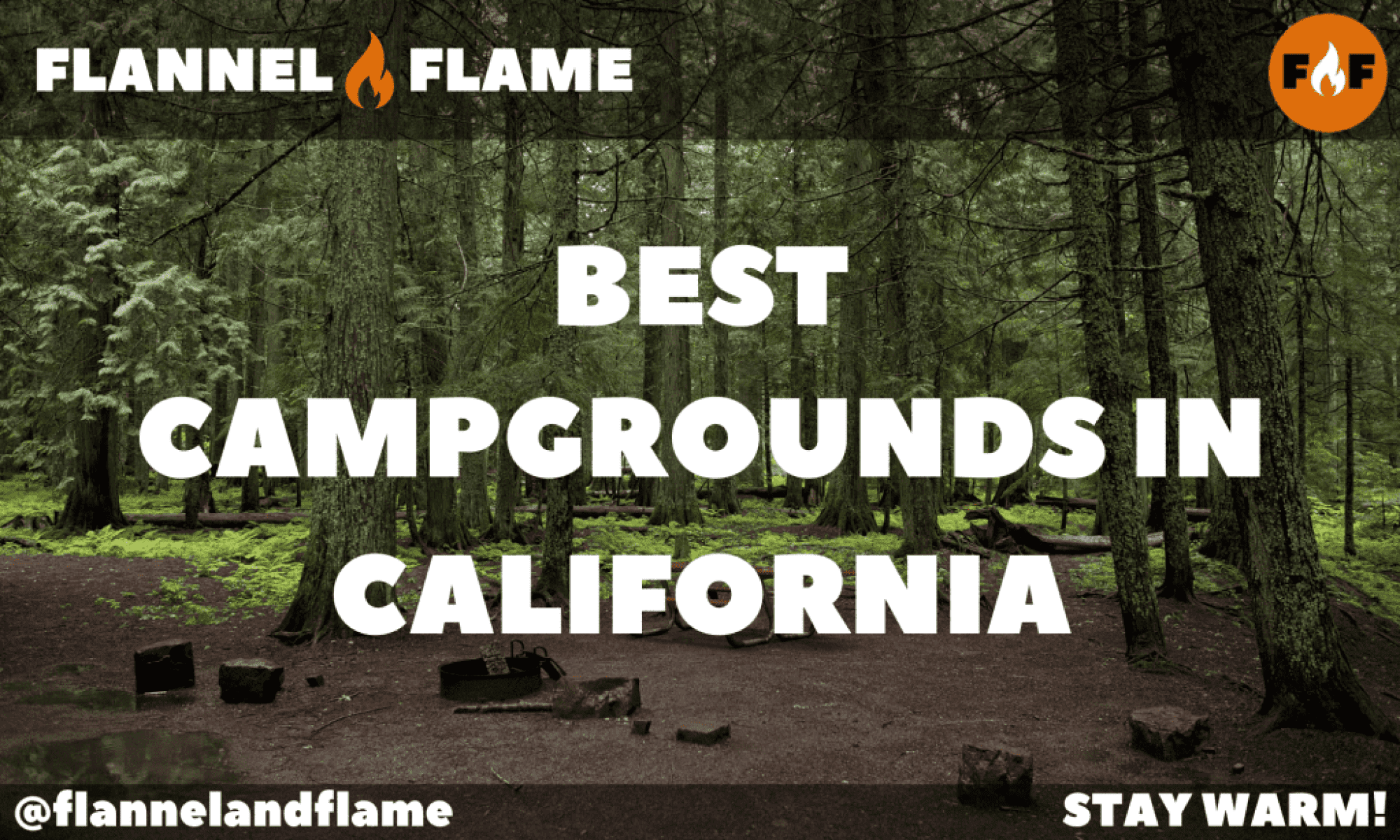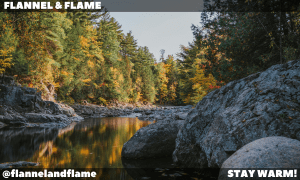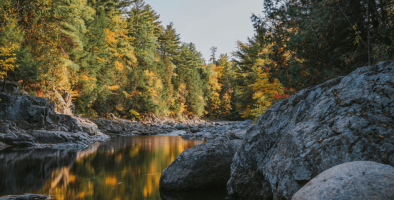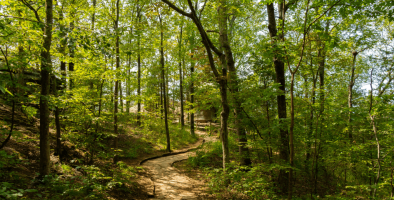Best Campgrounds in California
From the mist-shrouded redwood forests of the north to the sun-drenched deserts of the south, California offers a camping experience for every outdoor enthusiast. The Golden State encompasses an astonishing range of landscapes – towering mountains, rugged coastlines, verdant valleys, and stark desert vistas – each providing a unique backdrop for your next camping adventure. Whether you’re seeking solitude under ancient trees, craving the sound of ocean waves lulling you to sleep, or hoping to gaze at star-filled skies undiminished by city lights, California’s campgrounds deliver experiences that will leave you breathless. Let’s explore some of the most extraordinary places to pitch your tent or park your RV in this outdoor paradise.
Pfeiffer Big Sur State Park
Number of Campsites: 189
Reservations: Reserve California
Address: 47225 Highway 1, Big Sur, CA 93920
Where the Santa Lucia Mountains plunge dramatically into the Pacific Ocean, Pfeiffer Big Sur State Park offers camping in one of the most iconic landscapes in America. The campground nestles alongside the Big Sur River, beneath a canopy of towering redwoods that filter sunlight into ethereal beams that dance across the forest floor. The air here carries a magical mixture of fragrances – salt spray from the nearby ocean, the sweet vanilla scent of sun-warmed redwood bark, and the earthy richness of the forest floor.
Sites spread along the riverbank and into the adjacent forest, creating pockets of privacy amid the grandeur. The gentle murmur of the river provides a constant soundtrack, occasionally punctuated by the distant roar of waves crashing against the coastline below. In the morning, tendrils of fog often snake their way through the redwood canopy, creating an atmosphere that feels more like an enchanted forest from a fairy tale than a campground merely hours from major cities.
The park serves as an ideal base for exploring the larger Big Sur region. Hiking trails lead from the campground into the backcountry, where coastal views reward those willing to climb. The trail to Pfeiffer Falls winds through redwood groves to a delicate 60-foot cascade that seems to embody the essence of Big Sur’s meeting of mountain and water. More ambitious hikers can tackle the trails that climb to panoramic viewpoints where the mountainous coastline stretches north and south as far as the eye can see.
Wildlife abounds here – from the playful stellar jays that might try to steal your breakfast to the occasional black-tailed deer that wander through the campground at dawn and dusk. Lucky campers might spot a California condor soaring on thermals above the coastline or encounter a bobcat slinking through the underbrush.
When evening falls and campfires begin to glow throughout the campground, the massive redwoods seem to draw closer, creating an intimate atmosphere despite their towering height. As darkness deepens, the stars appear between the branches overhead, and the daytime chatter of birds gives way to the soft hooting of owls and the rustle of nocturnal creatures. These moments, when nature envelops you completely, represent Big Sur camping at its finest.
Joshua Tree National Park (Jumbo Rocks Campground)
Number of Campsites: 124
Reservations: Recreation.gov
Address: 74485 National Park Drive, Twentynine Palms, CA 92277
In the heart of California’s high desert, Jumbo Rocks Campground offers an otherworldly camping experience amid massive boulder formations and the park’s namesake Joshua trees. The landscape here feels almost extraterrestrial – contorted trees with spiky limbs reaching skyward, massive rock piles balancing in seemingly impossible arrangements, and a vastness that makes humans feel wonderfully small under an endless sky.
The campsites here are nestled among the boulders, many offering natural rock walls that provide privacy and wind protection while doubling as nature’s playground. Children (and adults who haven’t forgotten how to play) scramble up smooth granite faces, explore narrow passages between rocks, and discover natural alcoves perfect for afternoon reading or stargazing. The pale granite absorbs the desert sun during the day and radiates gentle warmth well into the evening, creating natural comfort when desert temperatures drop after sunset.
What makes Joshua Tree truly magical is the quality of light. Morning brings soft golden illumination that makes the landscape glow, while sunset transforms the rocks into sculptures of orange and pink. Photographers flock here for these moments, when the interplay of light and shadow creates compositions that seem almost artificially perfect in their beauty.
During the day, hikers can explore miles of trails that showcase the park’s diverse ecosystems. The boundary between the Mojave and Colorado deserts runs through the park, creating surprising variations in plant and animal life. The Barker Dam trail leads to a historic reservoir that reflects the surrounding landscape when filled with water, while the Hidden Valley loop winds through a rock-enclosed basin once allegedly used by cattle rustlers.
As darkness falls, Joshua Tree reveals perhaps its greatest treasure – some of the darkest night skies in Southern California. The Milky Way arches overhead in a river of stars, planets shine with steady light, and meteor showers become unforgettable spectacles. Amateur astronomers set up telescopes in open areas, often generously sharing views with curious neighbors. Even without equipment, simply lying on a smooth boulder and gazing upward creates an experience of cosmic connection that many campers describe as spiritual.
Yosemite National Park (Tuolumne Meadows Campground)
Number of Campsites: 304
Reservations: Recreation.gov
Address: Tioga Road, Yosemite National Park, CA 95389
While Yosemite Valley draws the crowds, those seeking a more serene experience head to Tuolumne Meadows, where the highest campground in the park sits at nearly 9,000 feet elevation. Here, in this alpine wonderland, the Tuolumne River meanders lazily through vast meadows carpeted with wildflowers in summer, while granite domes and peaks create a dramatic backdrop that seems designed specifically to inspire awe.
The campground spreads across a lightly forested area adjacent to the meadows, with sites tucked among lodgepole pines that provide dappled shade during the day. The thin mountain air carries the mingled scents of sun-warmed pine needles, wild mint growing along the riverbanks, and the sweet perfume of lupines and other wildflowers that bloom in profusion after the snow melts.
What sets Tuolumne apart is its accessibility to some of the most spectacular high country in the Sierra Nevada. From your campsite, trails lead in all directions – to pristine alpine lakes cradled in granite bowls, to the summits of peaks offering panoramic views, and through meadows where mule deer graze unconcernedly as hikers pass by. The famous John Muir Trail and Pacific Crest Trail both pass nearby, bringing through-hikers with extraordinary tales of wilderness adventures.
The Tuolumne River offers perfect pools for a bracing dip on warm summer days, while anglers find solitude and success along its less-visited stretches. Just downstream, the river begins its dramatic descent toward the valley, creating a series of cascades and waterfalls that reward hikers willing to venture away from the main meadow area.
Nights at this elevation bring a remarkable celestial show. With minimal light pollution and thin mountain air, the stars appear so close and bright that first-time visitors often gasp when they first look up after dark. The temperature drops significantly, making campfires both delightful and necessary. As flames dance and sparks rise toward the star-filled sky, the day’s adventures become stories, and plans for tomorrow’s explorations take shape.
Bear-proof food storage is mandatory and serves as a reminder that this beautiful landscape remains genuinely wild. The occasional distant howl of a coyote or the muffled footsteps of a black bear passing through the forest edge reinforces that humans are merely visitors in this high-country realm.
Crystal Cove State Park
Number of Campsites: 58 (including 21 beachfront cottages)
Reservations: Reserve California
Address: 8471 N. Coast Highway, Laguna Beach, CA 92651
Where the coastal hills of Orange County meet the Pacific Ocean, Crystal Cove State Park offers a camping experience that combines pristine beaches with Mediterranean-type coastal sage scrub habitat. The Moro Campground sits on a bluff overlooking the ocean, with terraced sites that provide sweeping views of the coastline stretching toward Laguna Beach to the south and Newport Beach to the north.
The campground’s elevated position captures refreshing sea breezes that carry the distinctive tang of salt spray mixed with the aromatic scent of coastal sage. Sites are arranged to maximize both privacy and views, with many offering unobstructed vistas of the ocean where dolphins can frequently be spotted playing in the waves. The constant rhythm of those waves creates a soothing soundtrack that makes for remarkably peaceful sleeping.
What makes Crystal Cove extraordinary is its preservation of 3.2 miles of natural coastline in the midst of one of California’s most developed regions. A network of trails leads from the campground down to secluded coves where tidepools teem with fascinating marine life at low tide – colorful sea anemones, scuttling hermit crabs, and starfish clinging to rocks. Swimmers and snorkelers enjoy the park’s protected offshore underwater park, where the kelp forest harbors a remarkable diversity of fish and other marine creatures.
For those interested in cultural history, the Historic District features restored beach cottages from the 1920s through 1950s, some available for overnight rental. These charming structures offer a glimpse into Southern California’s beach culture before massive development transformed much of the coastline.
Hiking enthusiasts can explore over 18 miles of trails that wind through the park’s backcountry, where coastal sage scrub and native grasslands support an impressive variety of wildlife. From higher elevation trails, views extend from the ocean to the Santa Ana Mountains, creating panoramas that represent the essence of Southern California’s natural beauty.
As the sun sets over the Pacific, the western sky transforms into a canvas of orange, pink, and purple hues that reflect on the water’s surface. Campfires glow throughout the campground, their warm light creating islands of comfort as the marine layer sometimes rolls in, bringing a misty embrace to the coastline. These evening moments, when the day’s activities give way to quiet contemplation of nature’s beauty, create memories that draw campers back to Crystal Cove season after season.
Redwood National and State Parks (Jedediah Smith Campground)
Number of Campsites: 86
Reservations: Reserve California
Address: 9878 US-199, Crescent City, CA 95531
In the far northern reaches of California, where the ancient redwood forests meet the Smith River – the last undammed river in California – Jedediah Smith Campground offers an immersive experience in one of the most primeval landscapes in America. The campground sits beneath a canopy of redwoods so massive that they create their own microclimate. The forest floor remains cool and damp even during summer heat, nurturing ferns, mushrooms, and other understory plants that add to the prehistoric atmosphere.
Sites are tucked among the massive trunks of these ancient trees, some of which have stood for over a thousand years. Filtered sunlight creates a perpetual twilight beneath the canopy, with occasional sun-dappled clearings where warmth penetrates to the forest floor. The air here carries a distinctive scent – a mixture of damp earth, redwood tannins, and the slight spiciness of bay laurel that grows in the understory. This fragrance, more than any other sensory experience, transports campers into a world that feels removed from modern concerns.
What makes this campground truly special is its location at the confluence of worlds – where the towering redwood forest meets the crystal-clear Smith River. The river’s emerald pools and riffles are just steps from many campsites, offering swimming holes where the brave can take a refreshing (though bracing) dip in waters that originate in mountain snowmelt. The juxtaposition of these ancient trees with the ever-changing river creates a powerful reminder of nature’s different timescales.
Trails lead from the campground into groves where some of the world’s tallest trees reach skyward. The Boy Scout Tree Trail winds through a particularly impressive section of old-growth forest to a hidden waterfall, while the Simpson-Reed Trail offers a shorter loop through a forest so dense with massive trees that it challenges the imagination. These walks aren’t merely exercise – they’re pilgrimages to living monuments that predate European settlement of North America.
Wildlife abounds in this lush environment. Roosevelt elk might be spotted grazing in meadows near the forest edge, while black bears occasionally make appearances (necessitating careful food storage). Marbled murrelets – endangered seabirds that remarkably nest in the canopy of old-growth redwoods – can sometimes be glimpsed at dawn and dusk, shooting like bullets to and from their nesting sites high above.
As night falls in the redwood forest, a profound silence descends, broken only by the gentle sounds of the river and the occasional call of an owl. The dense canopy obscures much of the night sky, but this only enhances the feeling of being enclosed in a cathedral of living trees, where darkness brings a sense of timelessness that connects campers to both the ancient past and the continuing cycle of forest life.
Alabama Hills Recreation Area
Number of Campsites: Dispersed camping (no designated sites)
Reservations: No reservations; first-come, first-served
Address: Whitney Portal Road, Lone Pine, CA 93545
In the shadow of Mount Whitney – the highest peak in the contiguous United States – the Alabama Hills offer a camping experience unlike any other in California. This is dispersed camping in its purest form, where you can position your tent or RV among fantastical rock formations with the snow-capped Sierra Nevada providing a dramatic backdrop. The landscape here has served as the setting for hundreds of Western films, and camping among these iconic views creates the feeling of living within a cinematic masterpiece.
The terrain consists of rounded rocks and eroded hills that contrast sharply with the jagged peaks of the Sierra crest looming to the west. These weathered granite formations create natural alcoves and wind breaks perfect for establishing camp, while also offering endless opportunities for exploration and photography. The geology here tells a fascinating story of different erosion patterns acting on the same type of rock that forms the nearby mountains – creating a landscape that feels simultaneously ancient and dynamic.
What makes the Alabama Hills truly magical is the quality of light. Sunrise sends the first golden rays shooting across the Owens Valley to illuminate the rock formations, while sunset bathes the Sierra crest in alpenglow that ranges from gold to pink to deep purple as daylight fades. Photographers and artists flock here for these moments, when the interplay of light, shadow, and landscape creates scenes of breathtaking beauty.
During the day, explorers can discover the many natural arches hidden among the rock formations. Mobius Arch frames Mount Whitney perfectly, creating one of the most photographed scenes in the Eastern Sierra. Other arches and windows require more searching to find, adding an element of treasure hunt to wanderings among the rocks.
The Alabama Hills sit at the boundary between ecosystems – the Great Basin Desert stretching eastward and the Sierra Nevada rising abruptly to the west. This transitional zone supports a diverse array of plant and animal life adapted to the arid conditions, from desert tortoises to golden eagles that soar on thermals above the landscape.
As darkness falls, the Alabama Hills reveal perhaps their greatest treasure – a night sky largely untouched by light pollution. The Milky Way arches overhead in stunning clarity, planets shine with steady light, and meteor showers become unforgettable spectacles. The rocks that provided shade during the day now radiate stored heat, creating comfortable microclimates for stargazing well into the night.
This is primitive camping that requires self-sufficiency – no running water, no garbage service, no designated fire rings – but the reward is an unparalleled sense of connection to one of California’s most dramatic landscapes. The solitude possible here, despite the area’s popularity, adds to the experience of camping in a land where natural forces have created a sculpture garden on a massive scale.
Final Thoughts About Camping In California
California’s campgrounds offer windows into the incredible diversity of landscapes that make the Golden State a paradise for outdoor enthusiasts. From the mist-shrouded redwood forests of the north to the sun-baked deserts of the southeast, from alpine meadows to coastal bluffs, each camping destination provides not just a place to sleep but a gateway to experiences that connect us to the natural world in profound ways.
What makes these six campgrounds truly special is how they showcase the remarkable range of California’s ecosystems. Within a single state, campers can sleep beneath the world’s tallest trees, wake to the sound of waves breaking on pristine beaches, watch alpenglow illuminate snow-capped peaks, or count shooting stars in desert skies. This diversity means that California camping offers something for every preference and every season.
As you plan your California camping journey, consider the timing of your visit carefully. Coastal campgrounds might be shrouded in fog during summer months when inland areas bake in heat. High-country campgrounds like Tuolumne Meadows are typically accessible only from July through September. Desert camping is most comfortable in spring and fall, when temperatures are moderate and wildflowers might carpet the landscape.
These campgrounds aren’t just destinations; they’re portals to experiences that remind us why getting outdoors matters – for our well-being, for our sense of wonder, and for creating memories that outlast any material possession. So pack your tent, fill your cooler, and hit the road – California’s best campgrounds are waiting to welcome you to adventures that will last a lifetime.
Other States to Explore
More from Flannel & Flame…
- Mexican Bean SaladBold, zesty, and bursting with color, this Mexican Bean Salad is a side dish that brings the flavor anywhere you roam. A hearty mix of black, kidney, and cannellini beans comes together with crisp bell peppers, sweet corn, and red onion, all tossed in a citrusy vinaigrette loaded with fresh cilantro and just the right… Read more: Mexican Bean Salad
- Cheesy PotatoesGolden, gooey, and loaded with flavor, these Dutch Oven Cheesy Potatoes are a campfire favorite that never disappoints. Tender hash browns are layered with melted cheese, savory seasonings, and just the right amount of smoky goodness from the fire. Baked slow and steady in a Dutch oven, this comforting side dish is perfect alongside grilled… Read more: Cheesy Potatoes
- Alternatives to S’Mores: Sweet Twists and Campfire Treats You’ll CraveThere’s something undeniably magical about a gooey s’more melting between your fingers under a starlit sky. The way the chocolate gets just soft enough, the marshmallow smolders to a golden hue (or charred to a crisp, if that’s your thing), and the graham crackers give that perfect crunch — it’s the taste of summer, nostalgia,… Read more: Alternatives to S’Mores: Sweet Twists and Campfire Treats You’ll Crave
- Best Hiking in New YorkWilderness, waterfalls, and wonder from the Catskills to the Adirondacks New York might be synonymous with skyscrapers, yellow cabs, and a certain iconic skyline—but trust me, beyond the hustle of the city, the Empire State hides some of the most jaw-dropping trails in the Northeast. We’re talking misty mountaintops, mossy forests, gorges carved by ancient… Read more: Best Hiking in New York








